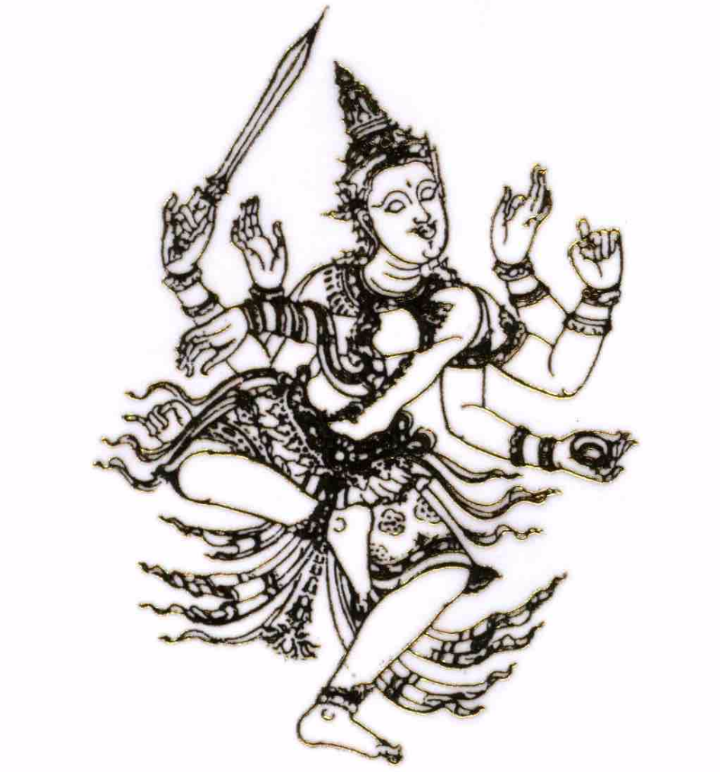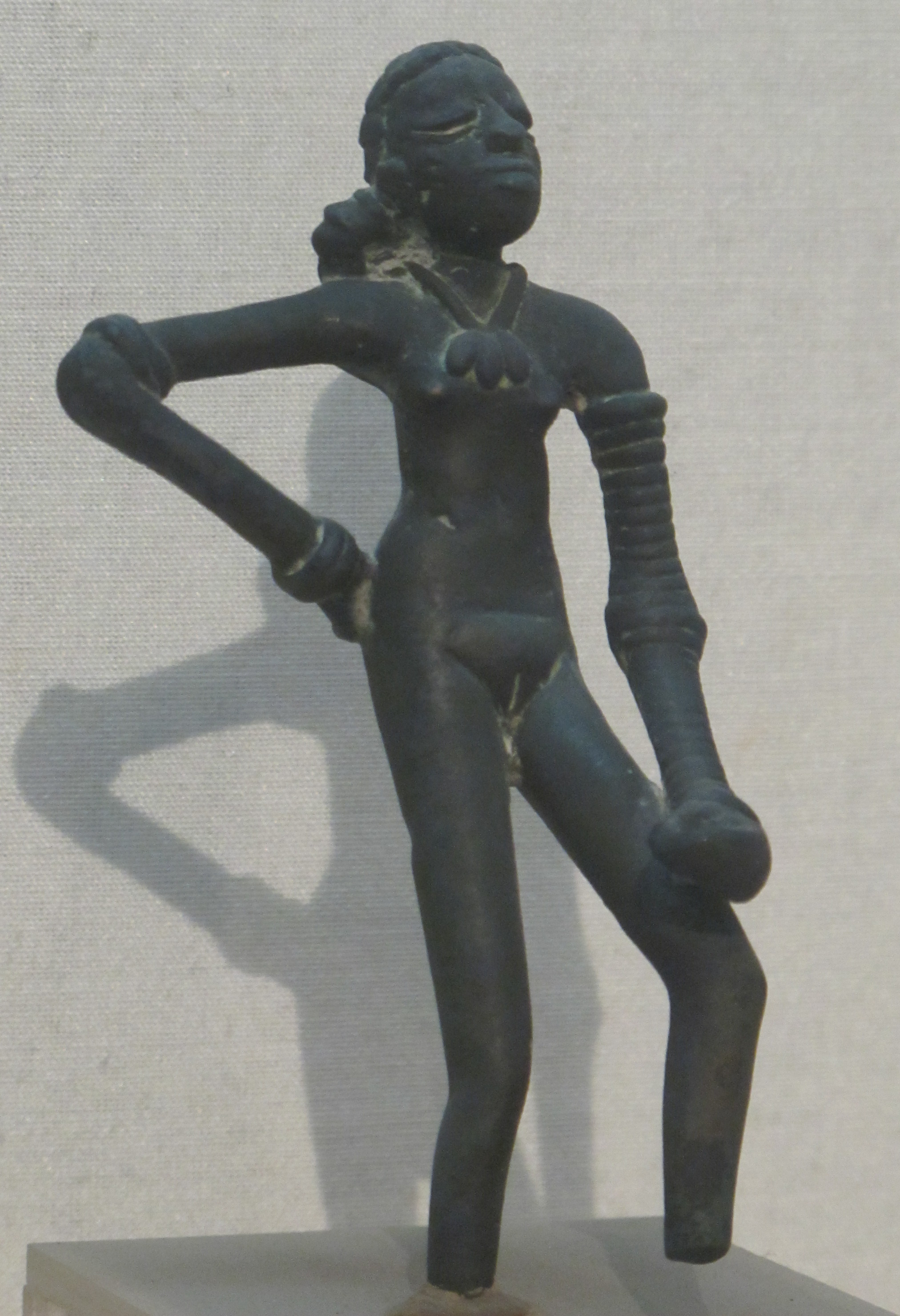|
Dattilam
Dattilam (दत्तिलम्) is an ancient Indian musical text ascribed to the sage (muni) Dattila. It is believed to have been composed shortly after the Natya Shastra of Bharata, and is dated between the 1st and 4th century AD. But Bharathamuni had given reference of the treatise " Dattilam" in his celebrated work "Natyashastra"(1-26) so there is a belief that Dattilam may be a work composed before Bharata Muni. Written in 244 verses, Dattilam claims to be a synthesis of earlier works on music. The text marks the transition from the '' sama-gayan'' (ritual chants as in the Samaveda), to what is known as gandharva music, after the gandharvas, musically adept spirits who are first mentioned in the Mahabharata. Dattilam discusses scales (swara), the base note (''sthana''), and defines a tonal framework called ''grama'' in terms of 22 micro-tonal intervals (''sruti'') comprising one octave. It also discusses various arrangements of the notes (''murchhana''), the permut ... [...More Info...] [...Related Items...] OR: [Wikipedia] [Google] [Baidu] |
Indian Classical Music
Indian classical music is the art music, classical music of the Indian subcontinent. It is generally described using terms like ''Shastriya Sangeet'' and ''Marg Sangeet''. It has two major traditions: the North Indian classical music known as ''Hindustani classical music, Hindustani'' and the South Indian expression known as ''Carnatic classical music, Carnatic''. These traditions were not distinct until about the 15th century. During the period of Mughal Empire, Mughal rule of the Indian subcontinent, the traditions separated and evolved into distinct forms. Hindustani music emphasizes improvisation and exploration of all aspects of a raga, while Carnatic performances tend to be short composition-based. However, the two systems continue to have more common features than differences. Another unique classical music tradition from the eastern part of India is ''Odissi music'', which has evolved over the last two thousand years. The roots of the classical music of India are found ... [...More Info...] [...Related Items...] OR: [Wikipedia] [Google] [Baidu] |
Natya Shastra
The ''Nāṭya Shāstra'' (, ''Nāṭyaśāstra'') is a Sanskrit treatise on the performing arts. The text is attributed to sage Bharata, and its first complete compilation is dated to between 200 BCE and 200 CE, but estimates vary between 500 BCE and 500 CE. The text consists of 36 chapters with a cumulative total of 6,000 poetic verses describing performance arts. The subjects covered by the treatise include dramatic composition, structure of a play and the construction of a stage to host it, genres of acting, body movements, make up and costumes, role and goals of an art director, the musical scales, musical instruments and the integration of music with art performance. The ''Nāṭya Śāstra'' is notable as an ancient encyclopedic treatise on the arts, one which has influenced dance, music and literary traditions in India. It is also notable for its aesthetic "Rasa" theory, which asserts that entertainment is a desired effect of performance arts but not t ... [...More Info...] [...Related Items...] OR: [Wikipedia] [Google] [Baidu] |
Raga
A raga ( ; , ; ) is a melodic framework for improvisation in Indian classical music akin to a musical mode, melodic mode. It is central to classical Indian music. Each raga consists of an array of melodic structures with musical motifs; and, from the perspective of the Indian tradition, the resulting music has the ability to "colour the mind" as it engages the emotions of the audience. Each raga provides the musician with a musical framework within which to improvise. Improvisation by the musician involves creating sequences of notes allowed by the raga in keeping with rules specific to the raga. Ragas range from small ragas like Bahar (raga), Bahar and Sahana (raga), Sahana that are not much more than songs to big ragas like Malkauns, Darbari and Yaman (raga), Yaman, which have great scope for improvisation and for which performances can last over an hour. Ragas may change over time, with an example being Marwa (raga), Marwa, the primary development of which has been going down ... [...More Info...] [...Related Items...] OR: [Wikipedia] [Google] [Baidu] |
Music Of India
Owing to India's vastness and diversity, Indian music encompasses numerous genres in multiple varieties and forms which include classical music, folk, rock, and pop. It has a history spanning several millennia and developed over several geo-locations spanning the sub-continent. Music in India began as an integral part of socio-religious life. History Pre-history Paleolithic The 30,000-year-old paleolithic and neolithic cave paintings at the UNESCO world heritage site at Bhimbetka rock shelters in Madhya Pradesh show a type of dance. Mesolithic and chalcolithic cave art of Bhimbetka illustrates musical instruments such as Gongs, Bowed Lyre, daf etc. Neolithic Chalcolithic era (4000 BCE onward) narrow bar shaped polished stone celts like music instruments, one of the earlier musical instrument in India, were excavated at Sankarjang in the Angul district of Odisha. There is historical evidence in the form of sculptural evidence, i.e. musical instruments, singing ... [...More Info...] [...Related Items...] OR: [Wikipedia] [Google] [Baidu] |
Bharata Muni
Bharata (Devanagari: भरत) was a '' muni'' (sage) of ancient India. He is traditionally attributed authorship of the influential performing arts treatise '' Natya Shastra'', which covers ancient Indian dance, poetics, dramaturgy, and music. Identity He is thought to have lived between 200 BCE and 200 CE, but estimates vary between 500 BCE and 500 CE. ''Nāṭya Śāstra'' Bharata is known only as being traditionally attributed authorship of the treatise '' Natya Shastra''. All other early Sanskrit treatises were similarly attributed to mythical sages. The text draws on his authority, as existing in the public imagination. The ''Nāṭya Śāstra'' is notable as an ancient encyclopedic treatise on the performing arts The performing arts are arts such as music, dance, and drama which are performed for an audience. They are different from the visual arts, which involve the use of paint, canvas or various materials to create physical or static art o ... [...More Info...] [...Related Items...] OR: [Wikipedia] [Google] [Baidu] |
Samagana
Sāma is composition of words in Rigvedic hymns from notes. The hymns of Rigveda form the base of ''Sāmagāna''. Sāmagāna is not merely a name given to singing hymns of Veda but represents the philosophy and science of uniting thought, sound and music. Sāmagāna is purpose of creation of Samaveda. Sāma Veda Sāma is singing of hymns from Rigveda alone and not from other Veda-s. "richi adhyoodham sama" ऋचि अध्यूढ्रम साम (Chhandog Upnishad 1.6.1). Hence Sāma is composition of words in Rigvedic hymns into notes. The richā-s or hymns of Rigveda are called yoni or ādhāra as they form the base of Sāmagān. In musicological parlance Sāma Veda has taken mātu (words) from Rigveda and provided dhātu (notes) to these words. (Bharatiya Sangeet Ka Itihaas. Dr. Thakur Jaidev Singh. Calcutta: Sangeet Research Academy, 1994, pp. 35 – 72) Parts of Sāma Veda Ārchika.आर्चिक् Only a few hymns in Sāma Veda Samhita were not based upon ... [...More Info...] [...Related Items...] OR: [Wikipedia] [Google] [Baidu] |
Samaveda
The ''Samaveda'' (, , from '' सामन्'', "song" and ''वेद'', "knowledge"), is the Veda of melodies and chants. It is an ancient Vedic Sanskrit text, and is one of the sacred scriptures in Hinduism. One of the four Vedas, it is a liturgical text which consists of 1,875 verses. All but 75 verses have been taken from the Rigveda. Three recensions of the ''Samaveda'' have survived, and variant manuscripts of the Veda have been found in various parts of India. While its earliest parts are believed to date from as early as the Rigvedic period, the existing samhita text dates from the post-Rigvedic Mantra period of Vedic Sanskrit, between c. 1200 and 1000 BCE or "slightly rather later," roughly contemporary with the Atharvaveda and the Yajurveda. Along with the Samhita layer of text, the ''Samaveda'' includes Brahmana texts, and a final layer of the text that covers philosophical speculations (Upanishads). These layers of the compilation date from the post-Rigvedic Man ... [...More Info...] [...Related Items...] OR: [Wikipedia] [Google] [Baidu] |
Gandharva
A ''gandharva'' () is a member of a class of celestial beings in Indian religions, such as Hinduism, Buddhism, and Jainism, whose males are divine performers such as musicians and singers, and the females are divine dancers. In Hinduism, they are regarded to be the celestial demigods who serve as the musicians of the devas. It is also a term for skilled singers in Indian classical music. In Buddhism, this term also refers to a being in the intermediate state (between death and rebirth). In Hinduism In Hinduism, the gandharvas () are a class of minor deities who serve as divine musicians in Hindu mythology. The term gandharva is present in Vedic sources (including in the Rigveda) as a singular deity. According to Oberlies, "In mandala I, IX and X the gandharva is presented as a celestial being (dwelling near the Sun / in the heavenly waters) which watches over the Soma (apparently) for the benefit of the gods and the sacrificers." The gandharva also "receives the Soma from the ... [...More Info...] [...Related Items...] OR: [Wikipedia] [Google] [Baidu] |
Mahabharata
The ''Mahābhārata'' ( ; , , ) is one of the two major Sanskrit Indian epic poetry, epics of ancient India revered as Smriti texts in Hinduism, the other being the ''Ramayana, Rāmāyaṇa''. It narrates the events and aftermath of the Kurukshetra War, a war of succession between two groups of princely cousins, the Kauravas and the Pandava, Pāṇḍavas. It also contains Hindu philosophy, philosophical and devotional material, such as a discussion of the four "goals of life" or ''puruṣārtha'' (12.161). Among the principal works and stories in the ''Mahābhārata'' are the ''Bhagavad Gita'', the story of Damayanti, the story of Shakuntala, the story of Pururava and Urvashi, the story of Savitri and Satyavan, the story of Kacha (sage), Kacha and Devayani, the story of Rishyasringa and an Ramopakhyana, abbreviated version of the ''Rāmāyaṇa'', often considered as works in their own right. Traditionally, the authorship of the ''Mahābhārata'' is attributed to Vyasa, Vy ... [...More Info...] [...Related Items...] OR: [Wikipedia] [Google] [Baidu] |
Swara
Swara () or svara is an Indian classical music term that connotes simultaneously a breath, a vowel, a note, the sound of a musical note corresponding to its name, and the successive steps of the octave, or ''saptanka''. More comprehensively, it is the ancient Indian concept of the complete dimension of musical pitch. At its most basic comparison to western music, a ''swara'' is, essentially, a "note" of a given scale. However, that is but a loose interpretation of the word, as a ''swara'' is identified as both a musical note and tone; a "tone" is a precise substitute for sur, relating to "tunefulness". Traditionally, Indian musicians have just seven ''swara''s/notes with short names: sa, re, ga, ma, pa, dha, ni, which they collectively refer to as ''saptank'' or ''saptaka''. This is one of the reasons why ''swara'' is considered a symbolic expression for the number seven. In another loose comparison to western music, ''saptak'' (as an octave or scale) may be interpreted as s ... [...More Info...] [...Related Items...] OR: [Wikipedia] [Google] [Baidu] |






